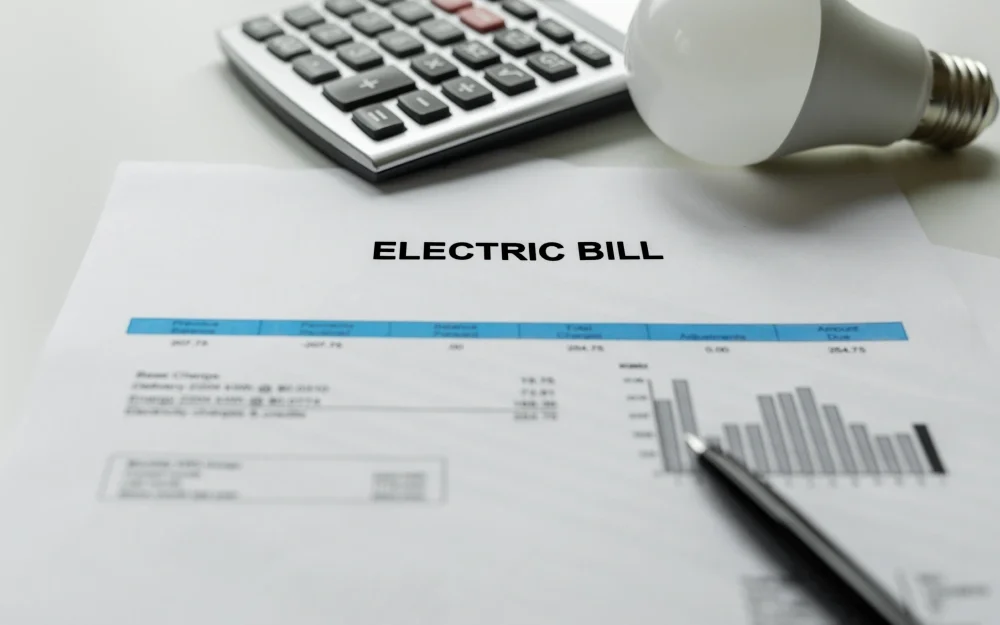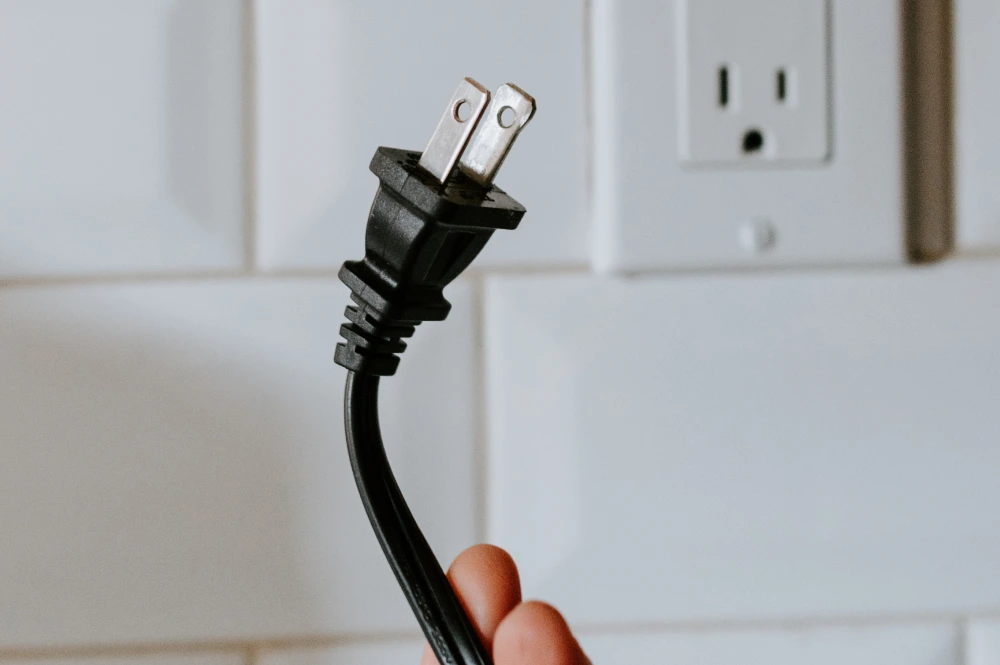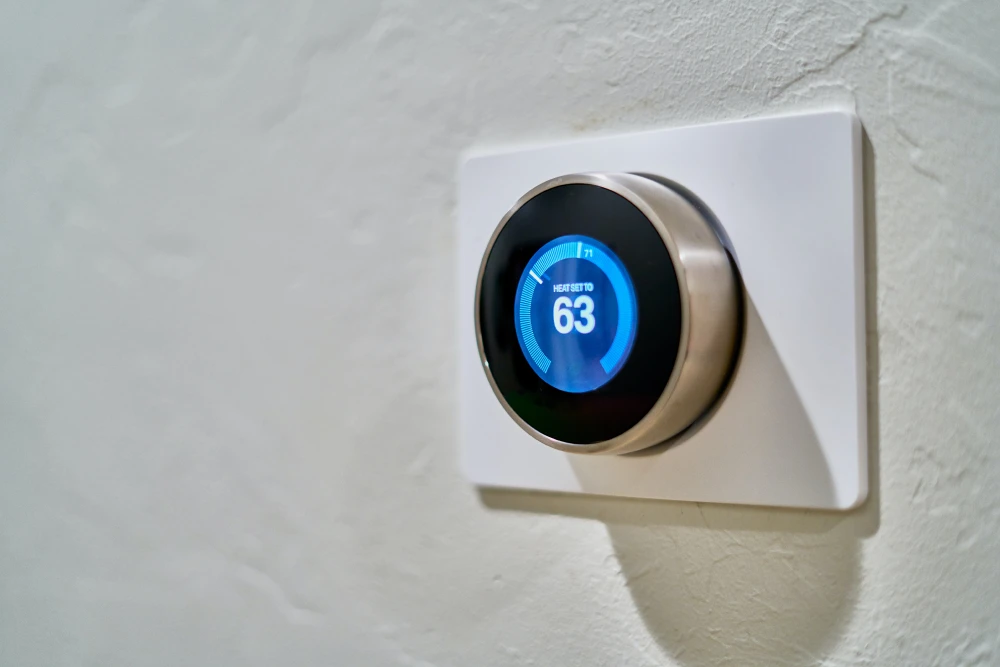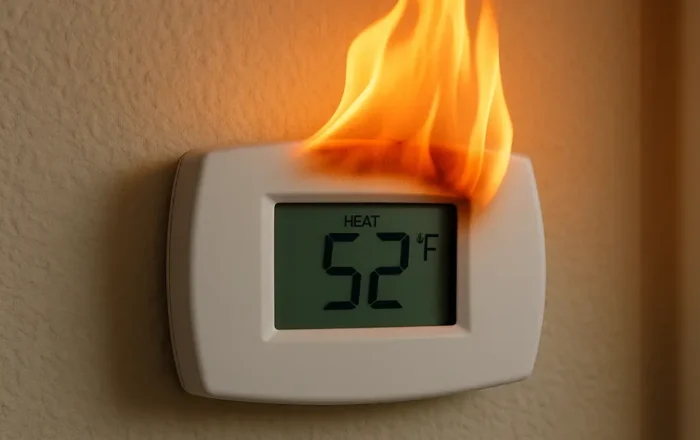Is My Thermostat Broken?
5 minute readHow to diagnose a faulty thermostat, fix common issues, and know when it’s time for a replacement.
Home > Blog > How to Read Your Electric Bill
6 minute read • Last update October 2024

Have you ever received a bill and thought, “This might as well be in a foreign language?” You’re not alone–many of us struggle to understand the details of our electric bills, often relying on gut instinct to gauge whether the monthly charges seem too high or low.
Knowing how to read your power bill shouldn’t be a puzzle. Let’s crack the energy provider code and explore what those terms on your energy bill really mean. By understanding how much electricity you’re using, you’ll gain the knowledge to take control of your electricity expenses. Here’s how to read your electric bill in simple, understandable terms.
Electricity bills are a regular part of our lives, arriving monthly in our mailboxes or email inboxes. We depend on electricity to power our homes, businesses, and daily activities, so understanding how our electricity bills are calculated and what factors influence them is essential.
In this guide, we break down electric bill terminology and show you how to read an electric bill step by step. We’ll also cover key factors, such as how an electric bill is calculated, how to interpret it, elements that influence the bill amount, tips to reduce electricity costs, common billing issues, and answers to frequently asked questions.
Understanding how to read your energy bill can be tricky, especially with all the technical jargon. Here are some terms you’ll encounter:
These terms are just the beginning. As we explore how to read your electric bill, you’ll gain a deeper understanding of each component. This knowledge will help you make informed decisions about your energy usage and potentially identify ways to save money.
Now that we know the basics, let’s explore how electricity bills are calculated. The process involves measuring your energy usage, applying the appropriate rates, and factoring in any additional fees or charges.
Understanding kWh in your electric bill puts you one step closer to making sense of your energy usage. But what is a kWh in an electricity bill? Energy use is typically measured in kilowatt-hours (kWh). By tracking your power usage in kWh, you can identify patterns in your usage history and find opportunities to save money, especially during high-demand periods. Your utility company uses an electric meter to measure the amount of electricity your home or business consumes over a given period.
Time-of-Use (TOU) rates are pricing structures where electricity costs vary based on the time of day. TOU rates divide electricity into different periods, usually peak, off-peak, and sometimes shoulder periods. Peak hours, when demand is highest, typically have higher rates than off-peak hours. This encourages consumers to shift their energy usage to off-peak times, easing the burden on the power grid during high-demand periods. By doing this, you can improve energy efficiency and reduce electric bills without cutting back entirely on your electric usage.
Tiered rate structures divide energy usage into tiers or blocks, each with its own rate. The first tier usually has a lower rate, while subsequent tiers have higher rates as energy consumption increases. For example, you might pay a lower rate for your first 500 kWh but a higher rate for usage beyond that. This rate structure aims to incentivize energy conservation by charging higher rates for higher usage.
Fixed-rate plans offer a consistent rate for electricity consumption regardless of the time of day or the amount of energy used. With fixed-rate billing, you pay the same rate for each kilowatt-hour, during peak and off-peak hours. This provides predictability and stability in your electricity costs since the rate remains constant throughout the billing period.
Reading an electricity bill may seem like deciphering a complex code, but it doesn’t have to be. We’ll walk you through each section of the bill, explaining what information you can find there. From account details and billing periods to energy usage breakdowns, rate plan reviews, fees, charges, and payment options, you’ll gain a clear understanding of your bill’s contents.
Your electricity bill contains important account information, such as your account number, service address, and billing contact details. It’s crucial to verify this information’s accuracy to ensure that you receive the bill for the correct location and can contact the utility company if needed.
The billing period specifies the timeframe for which you are being billed. It typically covers a monthly cycle, but can vary depending on your utility company. Note the start and end dates of the billing period, as these determine the timeframe for your energy usage calculation.
The energy usage breakdown section shows the total kilowatt-hours (kWh) of electricity used during the billing period. Some bills may provide daily or weekly breakdowns of your usage, helping you track your energy consumption patterns.
This section outlines your current rate, including the pricing structure and any applicable rates for different times of the day or usage tiers. Review this information to understand how your electricity charges are calculated and to determine if you’re on the most suitable rate plan for your needs.
Your electricity bill may include additional fees and charges beyond the cost of your energy consumption. These can include delivery charges, taxes, regulatory fees, or other applicable surcharges. Take note of these charges to understand the complete breakdown of your bill.
The payment options section details the various methods available to pay your electricity bill. These may include online payment, automatic bill payment, payment by mail, or in-person payment locations. Familiarize yourself with these options to ensure timely payment.
That’s your electricity bill explained in a nutshell!

Several factors can influence the amount you pay on your electricity bill:
The efficiency of your appliances and electronics can significantly impact your energy consumption. Upgrading to energy-efficient models can help reduce your usage and lower your bill.
Your electricity needs can vary with the seasons. Factors like heating and cooling requirements, daylight hours, and weather conditions can influence your energy consumption.
Your daily habits and lifestyle choices play a role in your electricity usage. Simple actions like turning off lights when not in use, unplugging idle electronics, and using natural light can make a difference.
If you’re on a time-of-use rate plan, adjusting your energy-intensive activities to off-peak hours can lead to considerable savings.
You can cut your electricity bill down by following a few simple tips:
Implementing energy-saving practices like turning off lights, using energy-efficient light bulbs, properly insulating your home, and using power strips to eliminate standby power can help reduce your energy consumption.

Embracing smart home technologies like programmable thermostats, smart plugs, and energy monitoring systems enables you to better manage and control your energy usage.
Installing solar panels or utilizing other renewable energy sources can offset your electricity consumption and potentially lower your bill.
While electricity bills are generally very accurate, there can be occasional issues that require attention. Knowing how to read your bill (and what your average consumption is) can help you spot and rectify issues quickly.
Sometimes, your bill may be based on estimated energy usage rather than an actual meter reading. This estimation can lead to discrepancies if the estimate differs significantly from your actual consumption. It’s important to monitor your meter readings and provide accurate information to your utility company to ensure precise billing.
Mistakes can happen, and your bill is not immune to errors. It’s essential to review your bill carefully to check for any incorrect charges, inaccurate meter readings, or calculation errors. If you notice any discrepancies, contact your utility company to rectify the issue.
Occasionally, utility companies may adjust their rates, which can impact your bill amount. Make sure to pay close attention to any communication your utility company sends to avoid bill shock in the future.
Understanding your electricity bill empowers you to take control of your energy usage and expenses. By familiarizing yourself with the components of your bill, knowing how it’s calculated, and being aware of the factors that influence it, you can make informed decisions to reduce your energy costs.
Implementing energy-saving practices, utilizing smart home technologies, and considering renewable energy installations are effective ways to lower your electricity bill.
Remember, your electricity bill is not just a piece of paper or email notification—it’s an opportunity to manage your energy consumption wisely and contribute to a more sustainable future.
Graham Lumley, Digital Marketing Manager at BKV Energy, leads digital and traditional marketing strategies, focusing on educating Texans about the state's deregulated energy market. With over 8 years of marketing experience, he creates content to help consumers understand and save on their energy bills, bringing a fresh and dynamic approach to the industry.

How to diagnose a faulty thermostat, fix common issues, and know when it’s time for a replacement.

Ceiling fans use less electricity than air conditioners, offering an efficient, low-cost way to stay cool year-round in Texas
Get $50 off your electric bill!
Use code BKVEJOINUS50
Enter your zip code to shop BKV Energy's affordable, fixed-rate Texas electricity plans. Use the promo code for $50 off your electric bill.